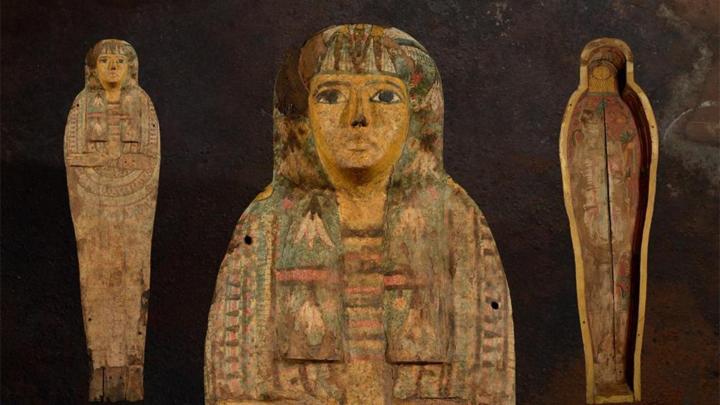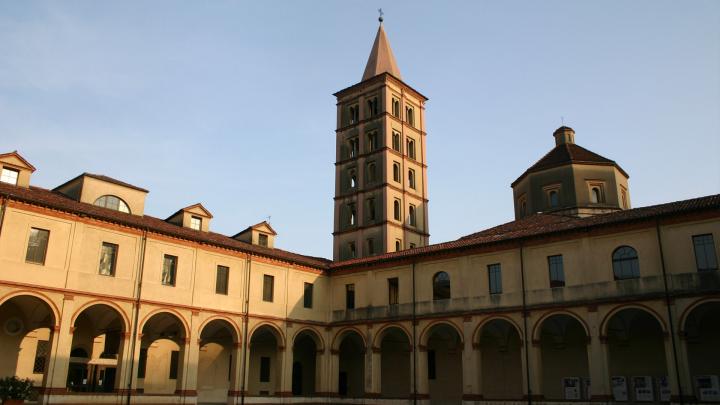Among the many artifacts at the Museum of the Territory in Biella, in the room dedicated to Egypt, the finely decorated wooden anthropoid sarcophagus stands out, with mummy belonging to a woman, Shepsettaaset, probably a priestess whose X-ray can also be viewed.
The remaining artifacts date from the Ptolemaic-Roman period (3rd century to 2nd century AD) and are illustrative of what made up the burial outfit of the period: clothing items such as sandals and cloth rolls, and toiletries such as a bronze mirror, wooden comb, and slate cosmetic palette, as well as items related to the canteen.
A valuable wooden box painted in red with a lattice pattern of interwoven rushes on a white background must have contained the bowels of the deceased as the surviving linen wrapping still testifies.
The Titeniset limestone stele provides an important example of a written funerary document, in which hieroglyphic text, arranged in columns and rows, is exemplified by the engraved depiction of offerings made to the deity for the afterlife.


